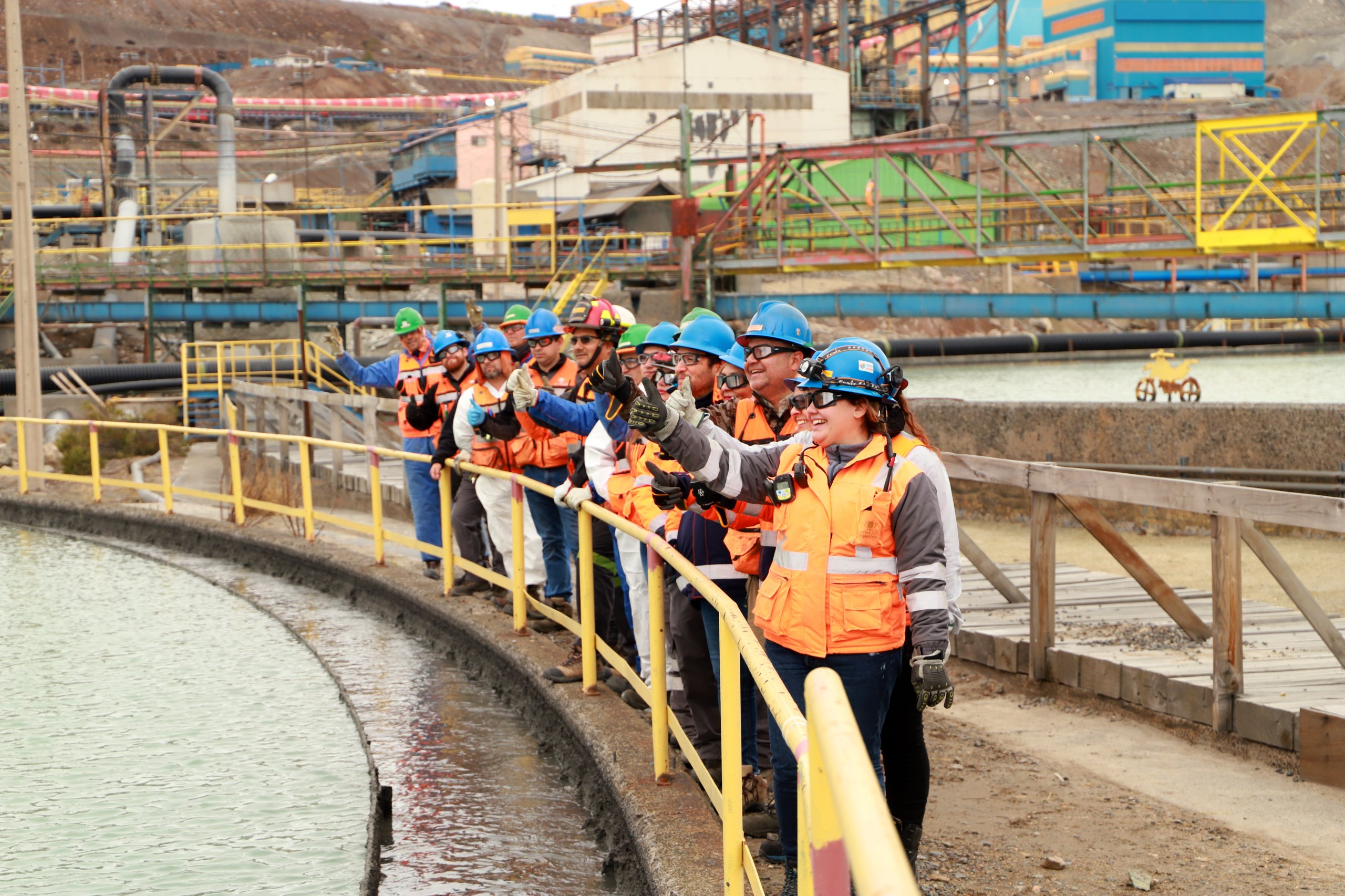Press
Codelco launches its first Climate Change Report and consolidates its strategy toward more resilient and low-emission mining
The document presents the state-owned company's climate action roadmap, its progress in mitigation, adaptation, governance, and risk management, and details its decarbonization commitments for 2030 and 2050. "This work is also a concrete demonstration of our commitment to transparency, accountability, and leadership, and also a reflection of our conviction that responsible mining is inseparable from our corporate purpose and the sustainable future of Chile and the world," says CEO Rubén Alvarado.
 Santiago, October 16, 2025.- Codelco launched its 2025 Climate Change Report, the first of its kind by the state-owned company, which systematizes the progress, challenges, and next steps of the Corporation's climate action strategy. With this publication, the company reaffirms its commitment to environmentally responsible, low-emission, and resilient mining.
Santiago, October 16, 2025.- Codelco launched its 2025 Climate Change Report, the first of its kind by the state-owned company, which systematizes the progress, challenges, and next steps of the Corporation's climate action strategy. With this publication, the company reaffirms its commitment to environmentally responsible, low-emission, and resilient mining.
“This document is not only a declaration of principles, it is also a concrete demonstration of our commitment to transparency, responsibility, and leadership in climate action, as it reflects our conviction that responsible mining is inseparable from our corporate purpose and the sustainable future of Chile and the world. For us at Codelco, it marks the beginning of a new era in corporate management, in which climate change ceases to be an external challenge and becomes a robust cornerstone of our business strategy,” explains Codelco CEO Rubén Alvarado.
The report was prepared in accordance with the recommendations of the Task Force on Climate-related Financial Disclosures (TCFD) and reflects the guidelines of the Corporate Sustainability Policy. It presents a detailed plan that will be implemented progressively through 2030, with the goal of strengthening internal capacities, developing management tools, and ensuring that the climate change dimension is present throughout the Corporation.
Mitigation: Towards low-carbon mining
By 2024, Codelco managed to reduce its Scope 1 and 2 emissions by 27% compared to 2019, moving toward carbon neutrality by 2050. It also committed to reducing the intensity of its Scope 3 emissions by 25% by 2030 and fully electrifying its personnel transportation vehicles by 2040.
Notable initiatives include the quantification of the corporate carbon footprint in the Ministry of the Environment's official program, Huella Chile; the incorporation of more than 250 electric buses for personnel transportation in the divisions, forming the largest fleet in the national mining industry; the awarding of contracts that ensure a 100% renewable energy matrix by 2030; and the development of technological pilots to decarbonize extraction trucks (CAEX) and underground operations.
In terms of reducing Scope 3 emissions, pilot projects were carried out with strategic suppliers such as Enaex, using cutting-edge explosives at Radomiro Tomic, which result in a 40% lower carbon footprint compared to traditional formulations. In addition, the circular economy model for manufacturing grinding balls with Magotteaux has reduced CO2 emissions by 40,000 tons annually at El Teniente.
Strengthening resilience
Codelco also made progress in implementing measures to address the physical risks of climate change, such as droughts, floods, and heat waves. These measures were integrated into the Comprehensive Risk Management and Control System (SIGRC), with specific methodologies for their identification, assessment, and treatment. In addition, a multidisciplinary Climate Change Emerging Risk Panel was established to conduct a comprehensive assessment of the issue.
In parallel, projects have been developed with organizations such as the Sustainable Minerals Institute (SMI) at the University of Queensland, with the goal of implementing a methodological framework that enables the creation and simulation of future scenarios to identify, model, and analyze physical climate risks, thereby supporting the design of effective adaptation strategies.
Water footprint
Regarding water resource management, a goal was established to reduce unitary freshwater consumption at sulfide plants located in water-stressed areas by 60% by 2030, compared to the consumption recorded in 2019. Likewise, the company seeks to reduce the use of freshwater to less than 10% in highly water-stressed basins by 2035. To achieve these objectives, projects focused on desalination and reuse have been promoted, including a plant that will supply industrial water to the Northern Operations starting in 2026, along with initiatives to recirculate mine water and improve consumption efficiency.
Open innovation
Meanwhile, the Innovation Strategy has been consolidated around an open innovation model, in which stakeholders from the mining, technological, and academic ecosystems collaborate to develop sustainable solutions. Within this framework, the Corporation has Open Codelco Conecta, a platform that has received more than 450 proposals, 20 of which are currently being implemented. It is also forging alliances with national and international universities, industry peers such as AMSA and BHP, and companies such as Toyota, Mitsui, Komatsu, and CAT, among others.
Review the full Climate Change Report, along with previous editions of the Sustainability Report.